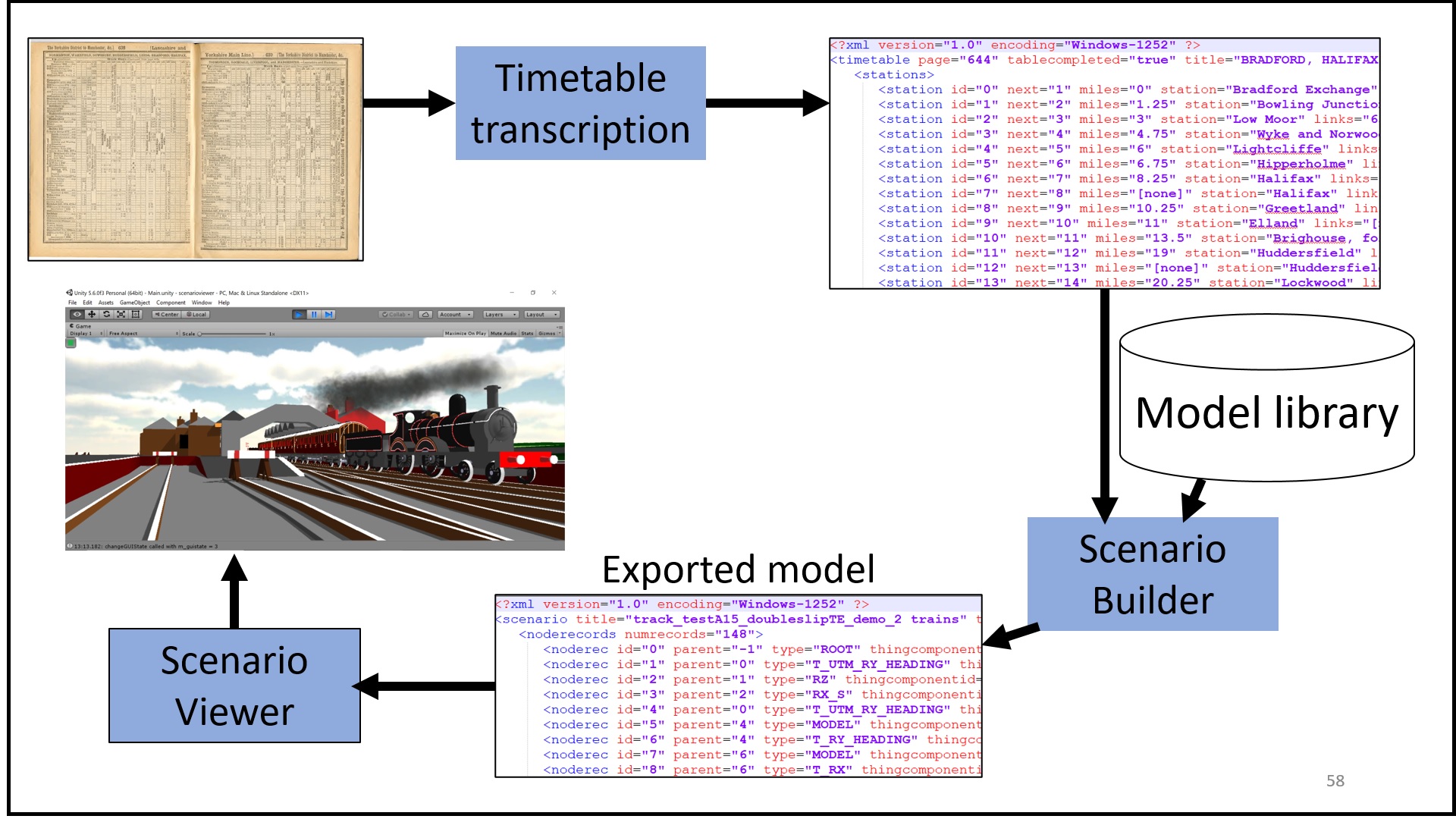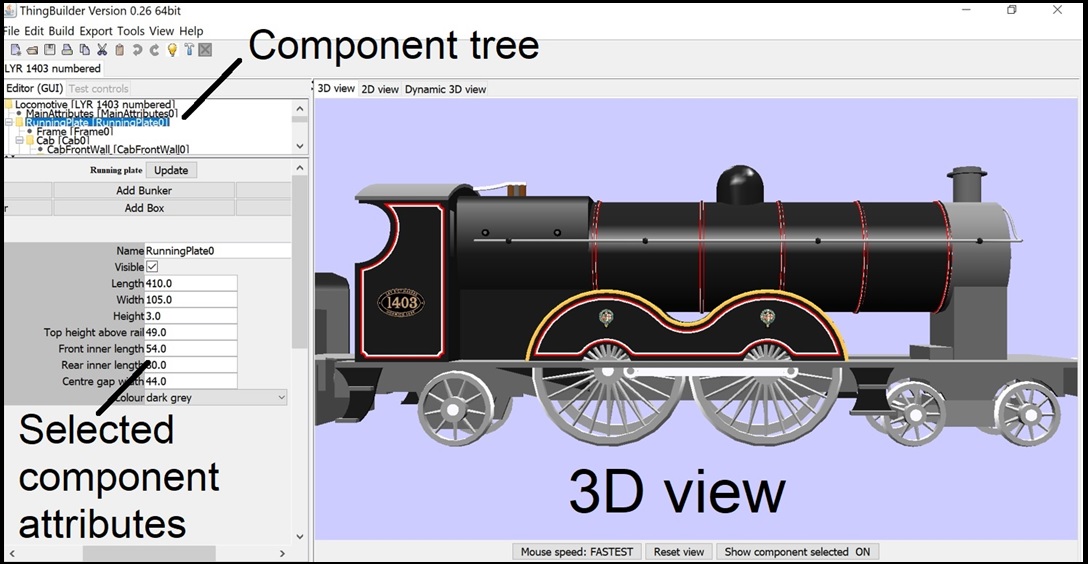
|
|
3D Parametric Modelling | Heritage | Education | Church Builder | Cathedral Builder | Bradshaw 1906 | Viewers | Downloads | Publications | Contact Us |
The 3D Parametric Modelling Project is developing software to create and employ 3D models in dynamic visualisations.
The project is based upon the proposition that a parameterised, hierarchical modelling approach can be applied to any kind of object once its grammar and vocabulary have been established. A textual description of the object using this grammar and vocabulary can be compiled into 3D models expressed in VRML and OBJ formats.
Mechanistic operations such as railway and shipping movements can be visualised automatically from narratives and timetables if the operating characteristics of the railways and ships are captured in the software.
The visualisations are aimed at use in education and heritage. Work progresses on producing 2D and 3D visualisations of the operation of Bradshaw’s Railway timetable. The software is free to use and can be downloaded. A Unity 3D viewer has been created to improve the quality of the visualisations. We have published a number of papers on the developing software. Our prototype modelling tool, Church Builder is still used in schools.
Model builders have been created that enable unskilled users to create descriptions easily which can be compiled into 3D models. The image below shows an locomotive model builder creating a model of a Lancashire & Yorkshire Railway Class 1400 steam locomotive.

The image below shows an interior view of an imagined cathedral in a cathedral model builder:
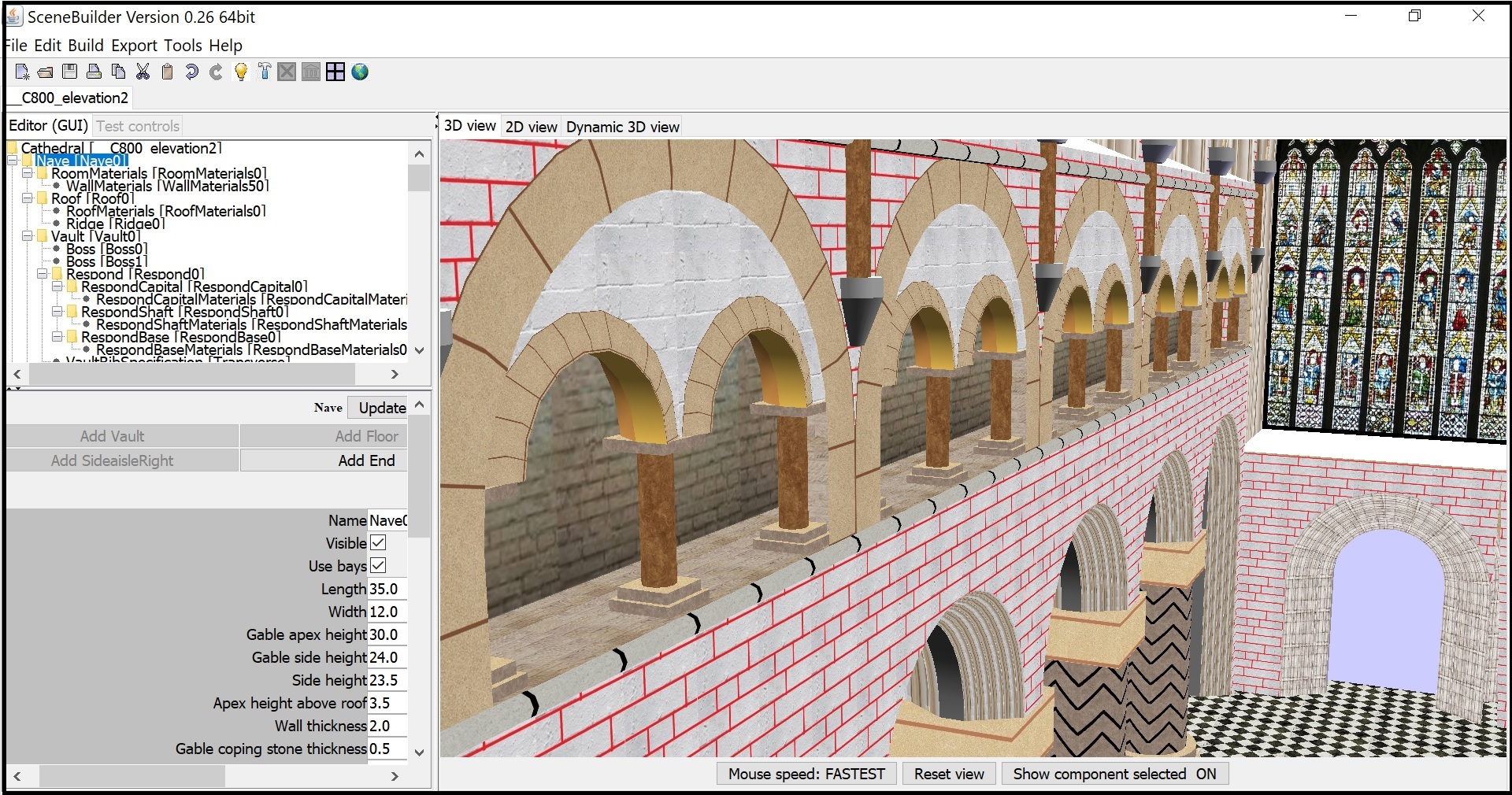
A range of model types can be constructed as shown below:

The image below shows a typical model builder system. The model builder contains an editor and a compiler. The editor is used to create a textual description of the model. The compiler converts this description into a 3D model, saved into VRML and OBJ format. The models can be exported to a model library for use in visualisations.
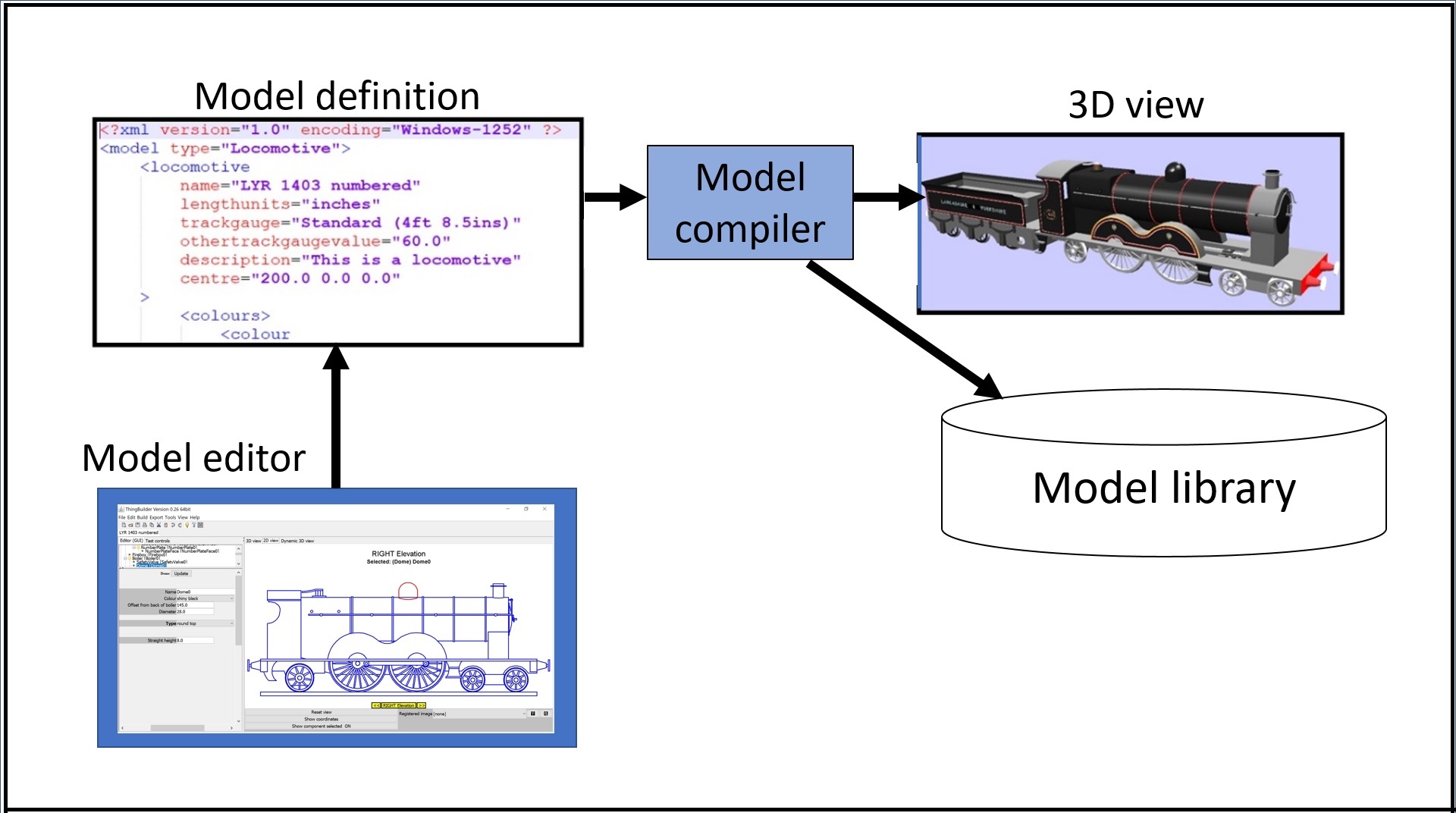
The models in the library can be incorporated into dynamic visualisations based on narrative or timetables.
The image below shows a narrative based railway scenario.
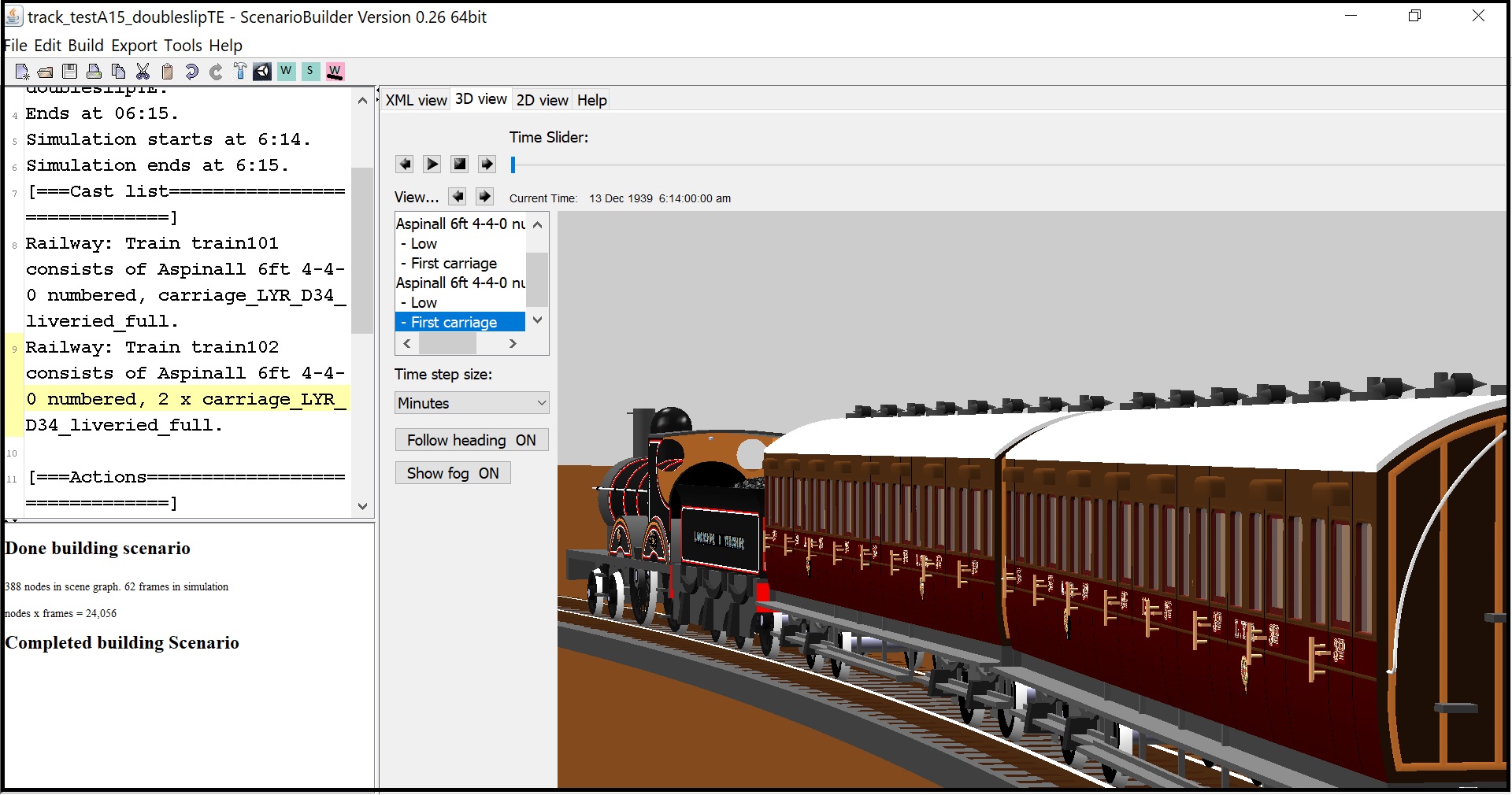
The image below shows a narrative based scenario on the River Mersey at Liverpool.
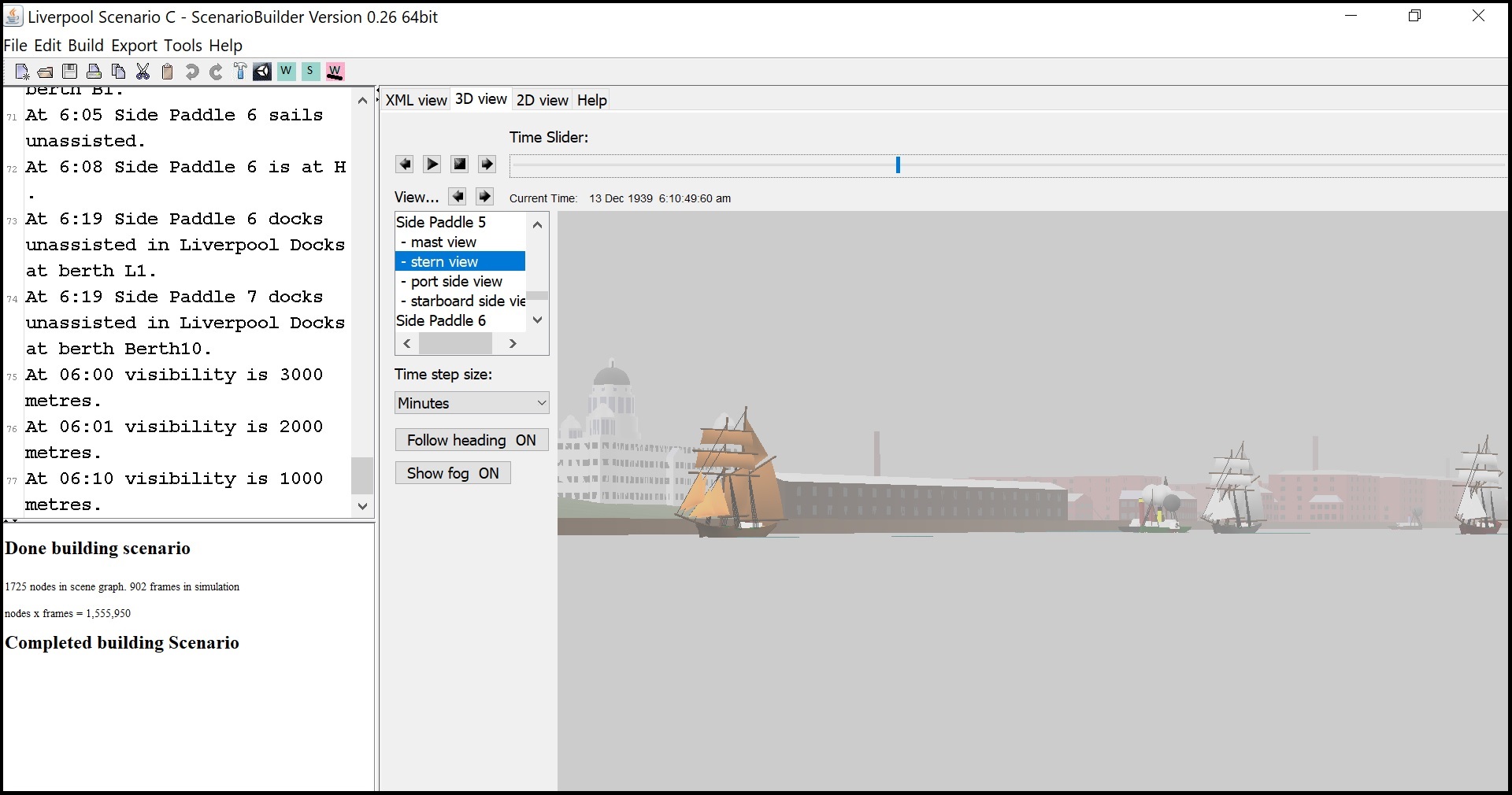
The image below shows the scenario builder system. A narrative is combined with the model library to produce a dynamic visualisation.
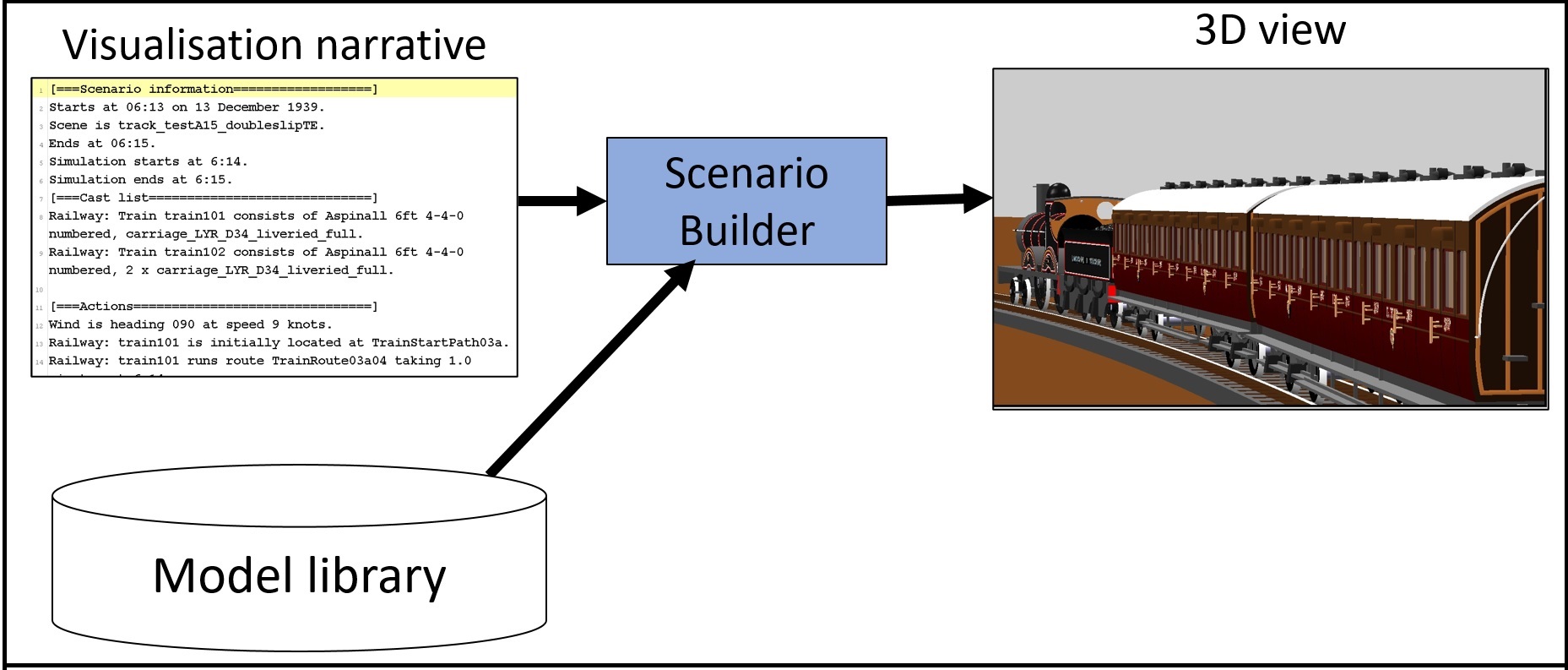
The scenario visualisations can be exported to a Unity 3D viewer. Any 3D environment in which:
can be used to create a viewer of our visualisations. Currently we have implemented viewers in Java 3D and Unity 3D.
The image below shows the system in which an exported visualisation is displayed in a Unity 3D Viewer.
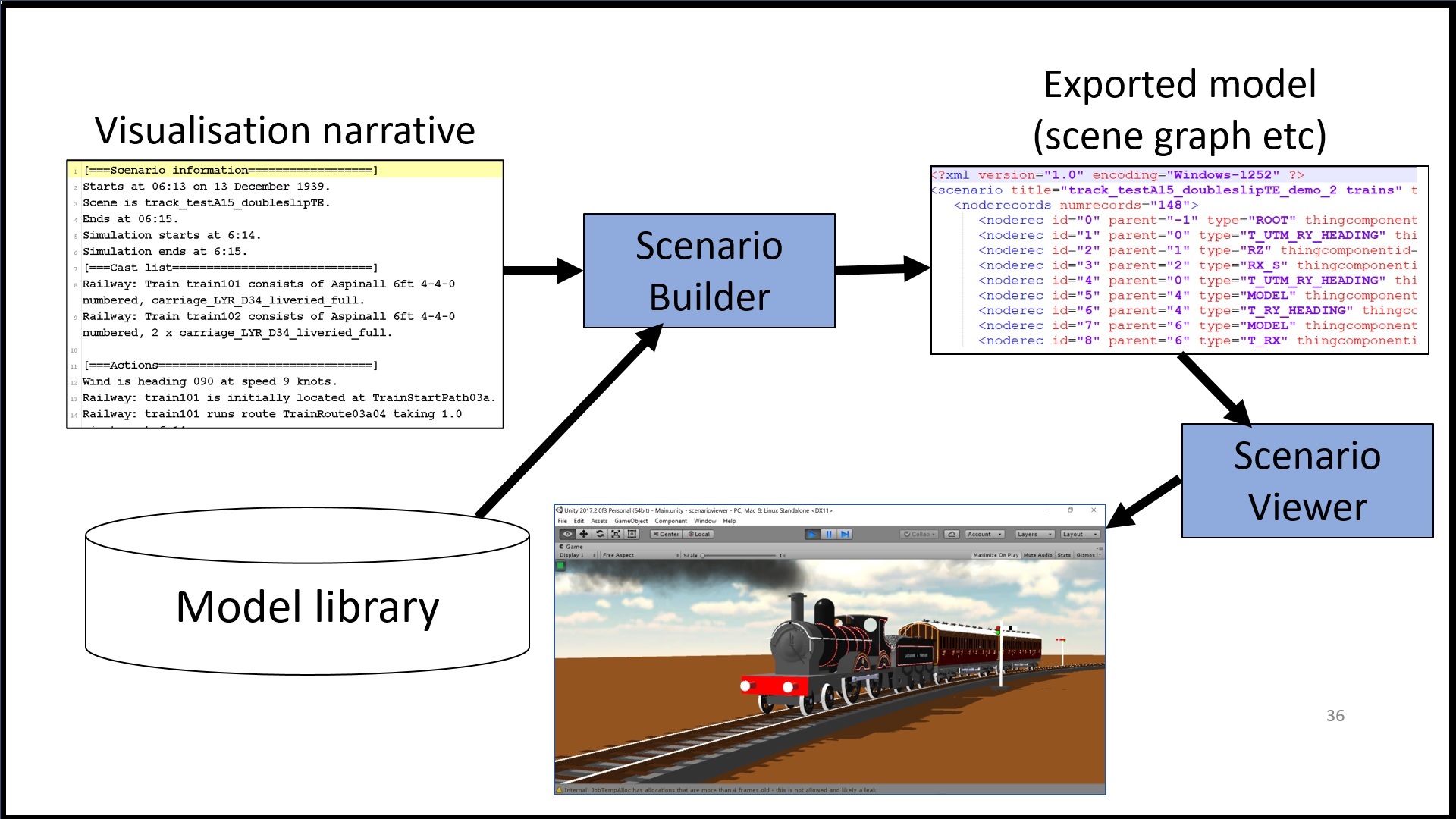
A heritage project is underway with the support of the Lancashire & Yorkshire Railway Society. This project is developing 2D and 3D visualisations of the Lancashire & Yorkshire Railway Company’s operations at its peak in the early 1900s. The image below shows the 1906 railway time table being transcribed and then visualised with Scenario Builder as a dynamic online 2D visualisation.
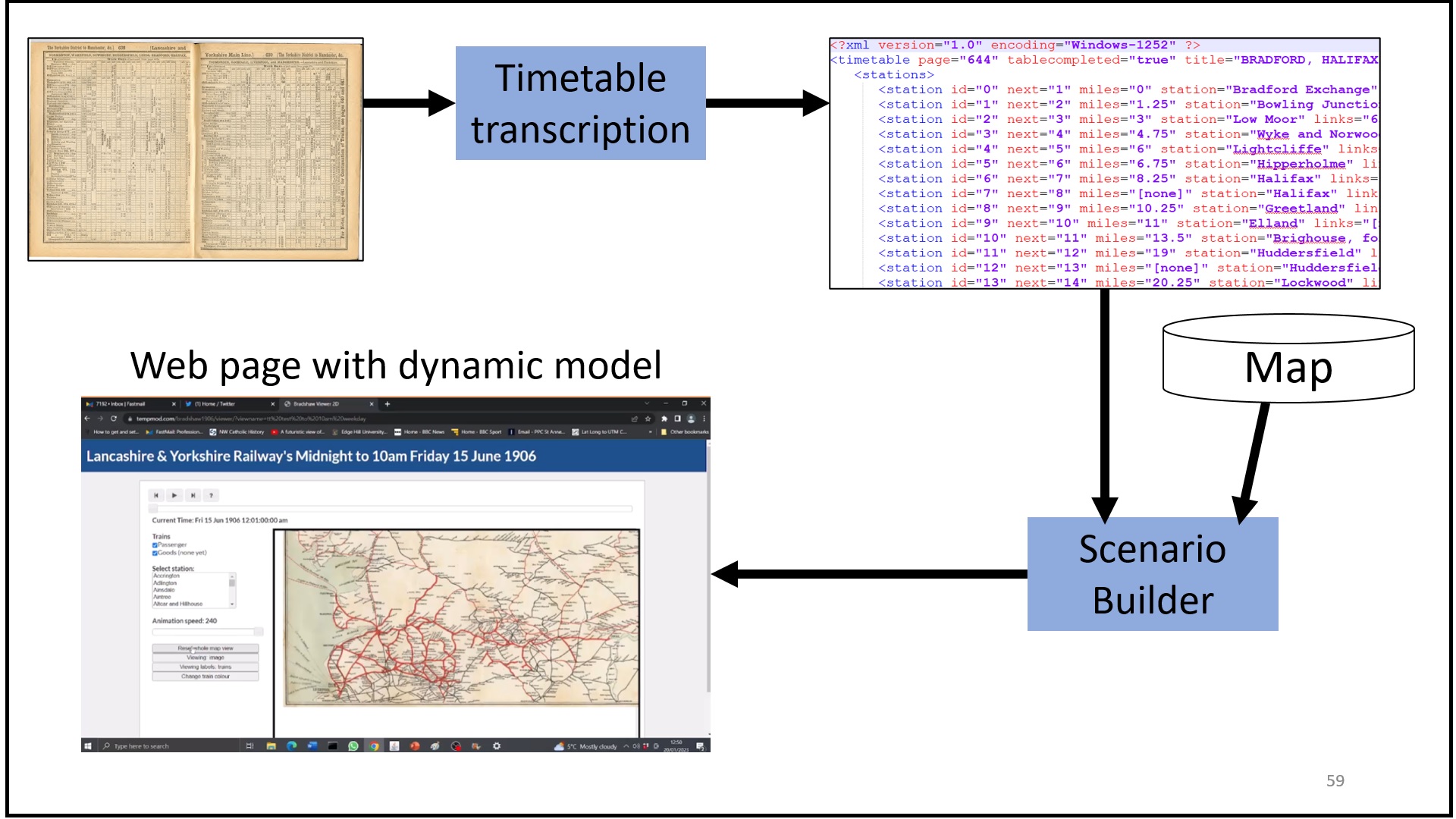
The image below shows a 1906 railway time table being transcribed and then visualised with Scenario Builder using the model library.
